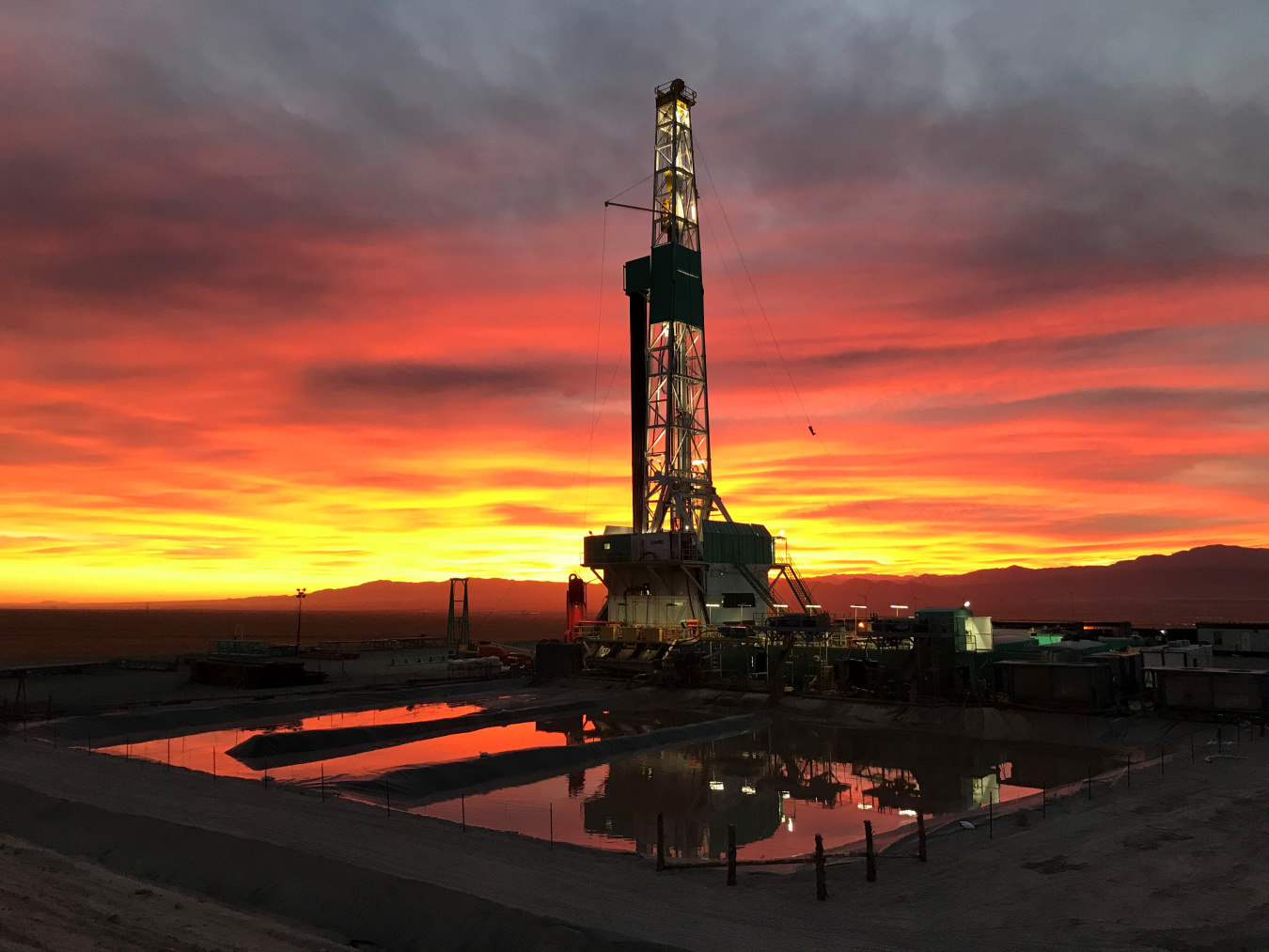FORGE has reached a significant milestone in advancing enhanced geothermal systems (EGS) technologies: confirmed connectivity between a newly drilled production well and the site’s existing injection well.
Geothermal Technologies Office
July 10, 2023The Frontier Observatory for Research in Geothermal Energy (FORGE) has reached a significant milestone in advancing enhanced geothermal systems (EGS) technologies!
Via preliminary tests, the Utah FORGE team has confirmed the connection between a newly drilled production well and the site’s existing injection well through a fracture system created during a multi-stage hydraulic fracturing process.

The Utah FORGE site. Credit: Clay Jones
The injection well was drilled first, between October 2020 and February 2021. At that time, drilling operations shattered expectations and the well was completed 62 days ahead of schedule. Following completion of that well, the team performed stimulation activities in three stages, and then quickly began drilling the production well in April 2023.
Since the completion of the second well in late June 2023, the University of Utah has assessed whether the injection and production well pair are connected via the stimulated fractures, i.e. whether they successfully created a geothermal reservoir from scratch, allowing for fluid circulation between the two wells.
The preliminary results do indicate connectivity, and thus the achievement of a critical step in demonstrating that stimulation activities can create geothermal reservoirs that can be harnessed for geothermal power production. Human-made EGS have the potential to unlock an incredible amount of energy; the recent Enhanced Geothermal Shot™ Analysis for the Geothermal Technologies Office indicates that EGS could provide 90 gigawatts of geothermal electricity-generating capacity, enough to power the equivalent of up to 65 million U.S. homes.
“This is a crucial next step in the Utah FORGE project’s goal of de-risking the tools and technologies required for making enhanced geothermal systems (EGS) technologies commercially viable” said Dr. Joseph Moore, principal investigator of Utah FORGE, in the press release for commencing drilling on the production well. “This will help us capture the enormous energy potential beneath our feet and bring low-cost, environmentally green, and renewable energy across the United States.”
Over the next year, the FORGE team will continue testing and analysis, establishing the new reservoir’s long-term connectivity and assessing stress conditions through short-term injection experiments. The FORGE team will also continue work on new drilling tools that can withstand the intense heat and harsh conditions in EGS environments.
May 2024 Update
On May 23, 2024, FORGE announced a second successful well stimulation. This commercial-scale stimulation connected two wells, and tests on fluid flow and energy transfer confirm the potential for EGS power production—a major breakthrough for the geothermal community. This high-impact success marches EGS closer to replicability and widescale deployment.
This announcement comes shortly after FORGE announced the finalization of contracts associated with their second R&D solicitation, Solicitation 2022-2.
The U.S. Department of Energy funds the FORGE field site in Milford, Utah, for scientists and engineers to develop, test, and accelerate breakthroughs in EGS technologies and techniques through R&D solicitations and help identify a replicable, commercial pathway for EGS. To learn more about this milestone in achieving that goal, watch the Office of Energy Efficiency and Renewable Energy’s Assistant Secretary Alejandro Moreno talk about FORGE and the future of EGS, and read coverage in Deseret News, The Salt Lake Tribune, ThinkGeoEnergy, and Wired.

